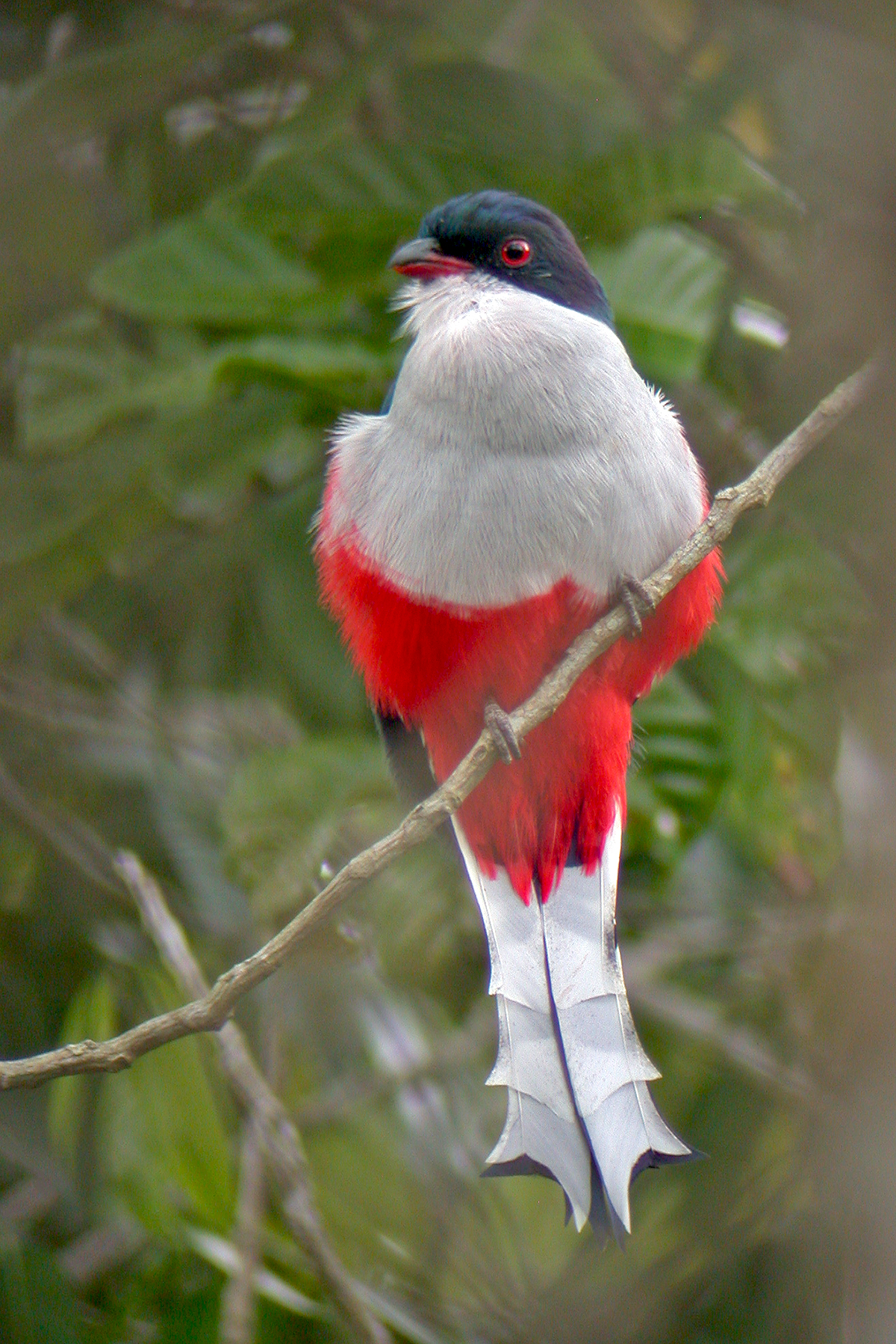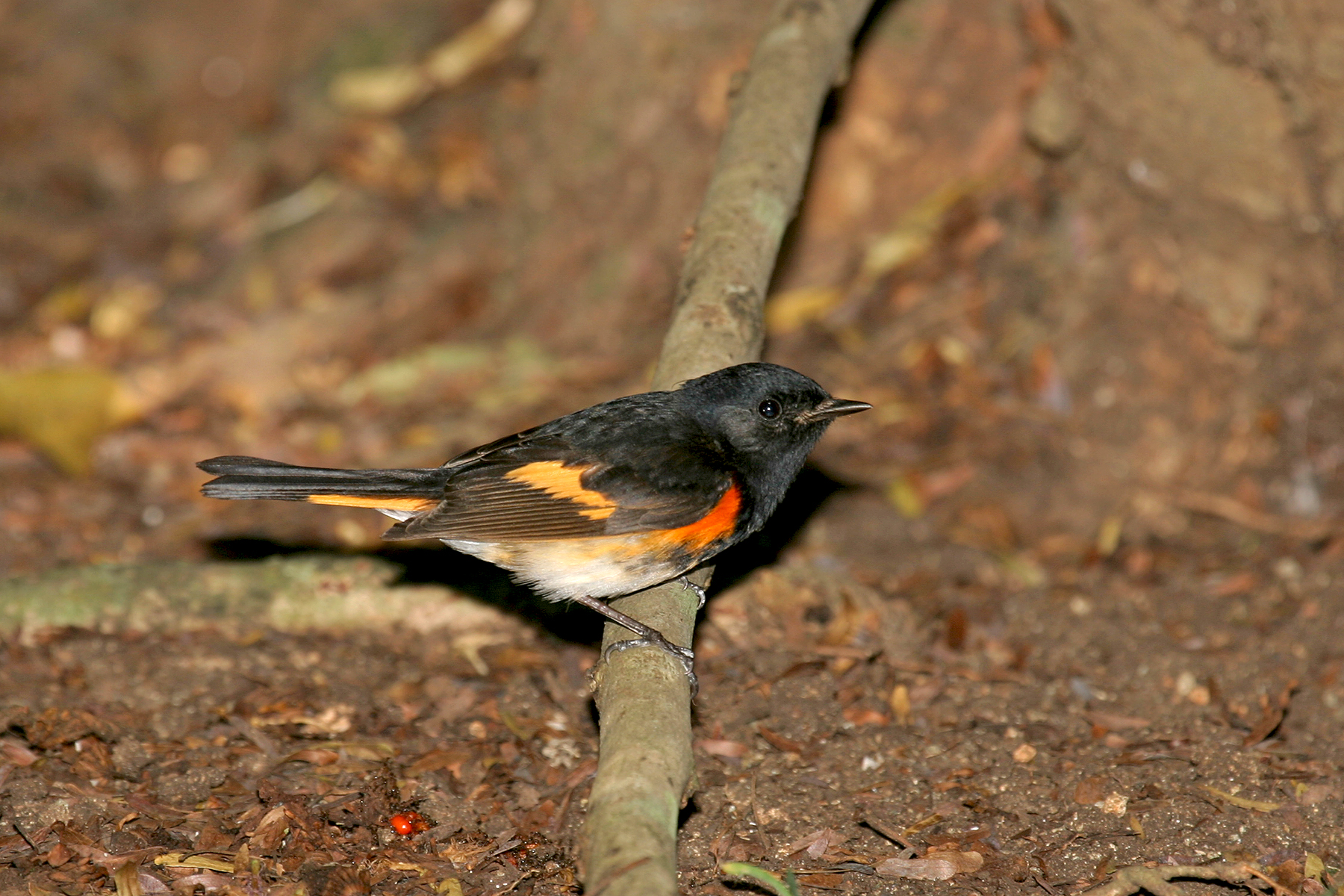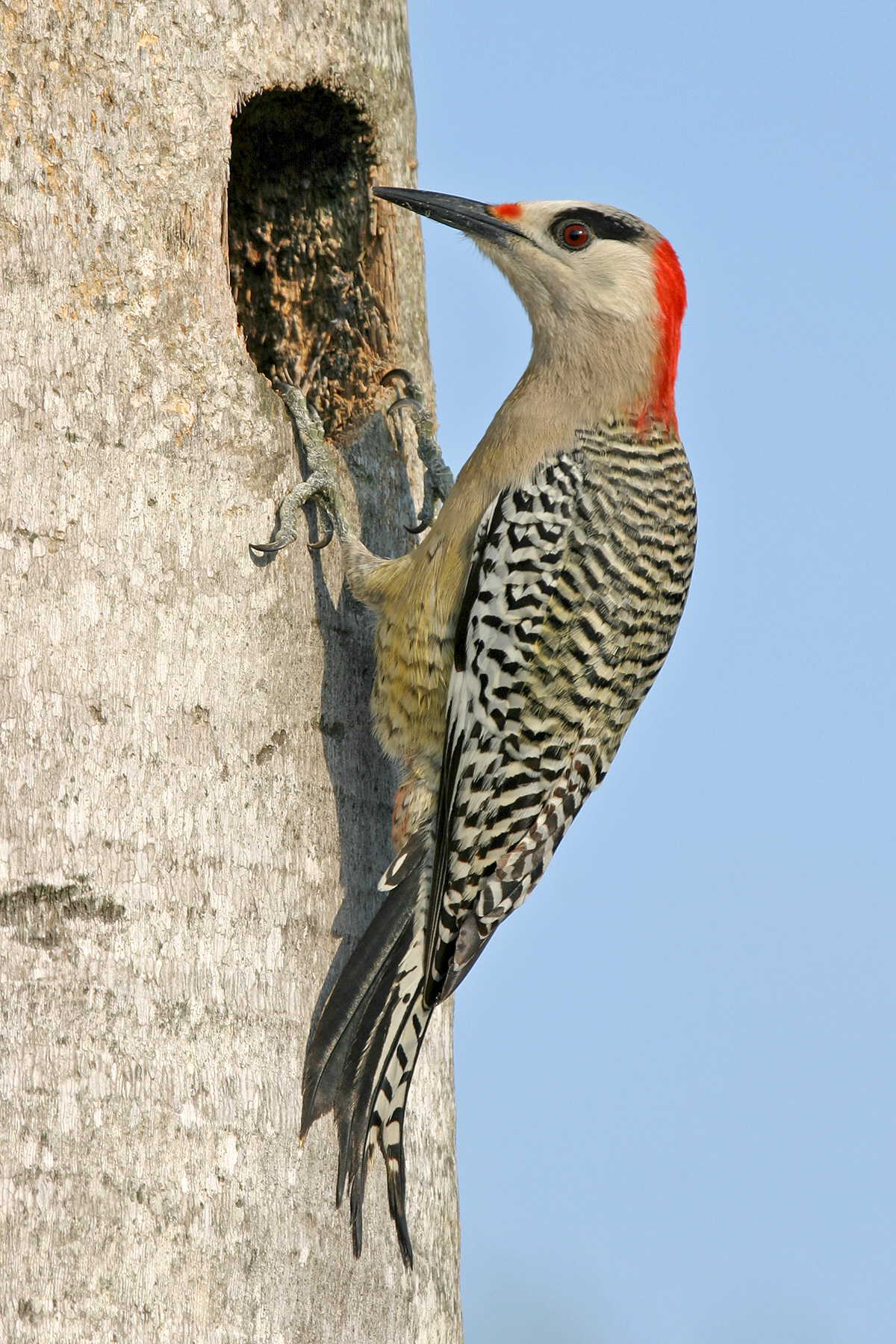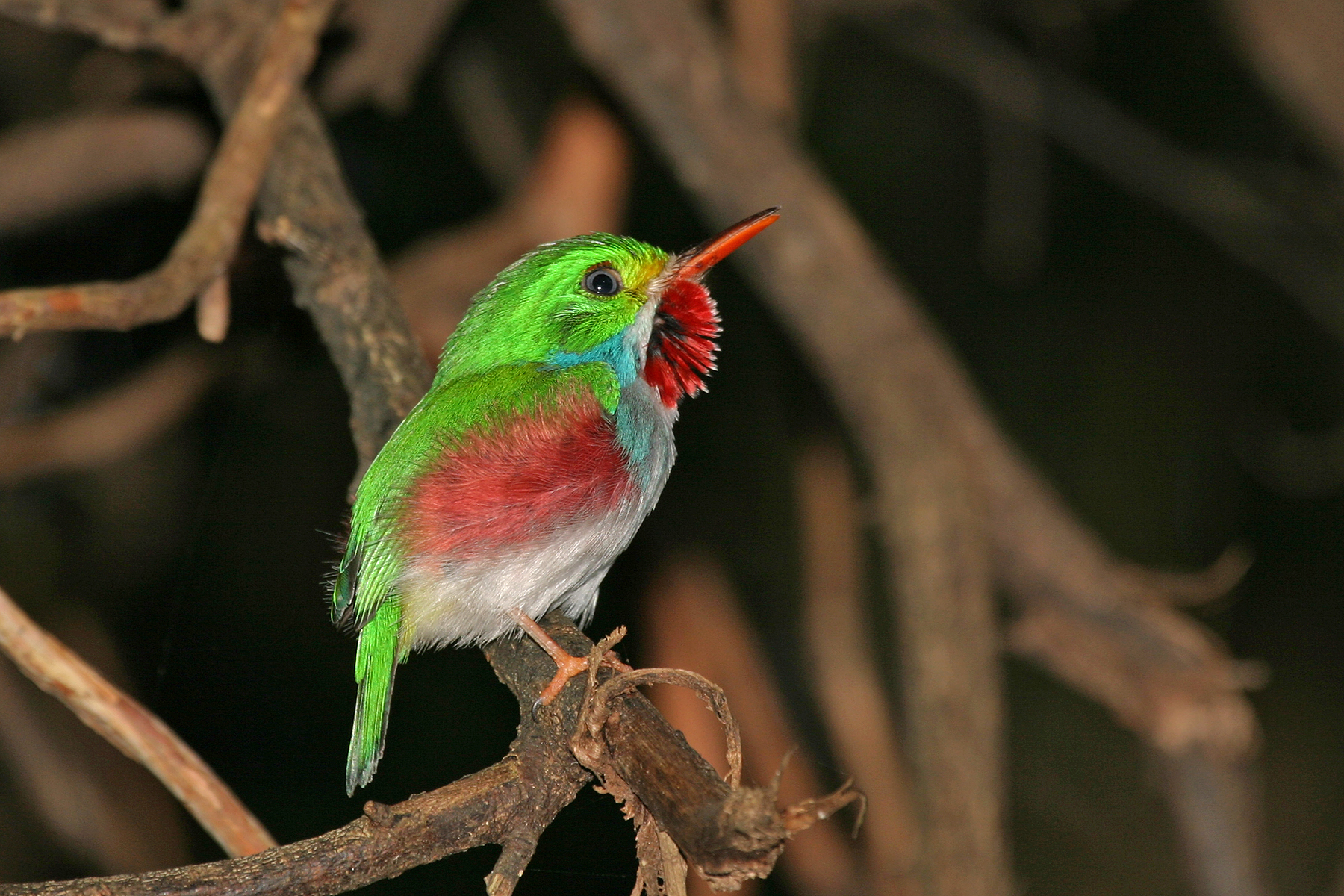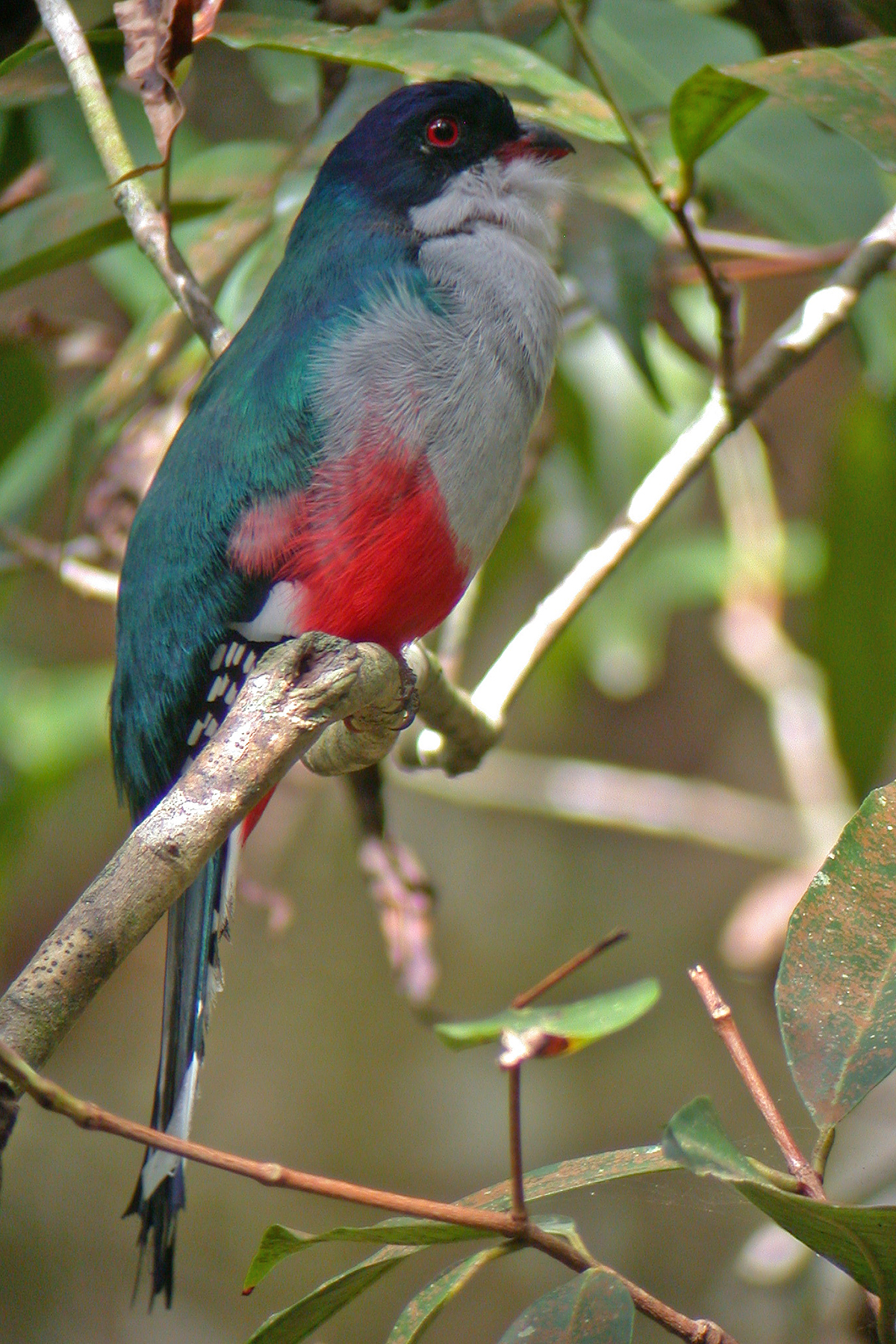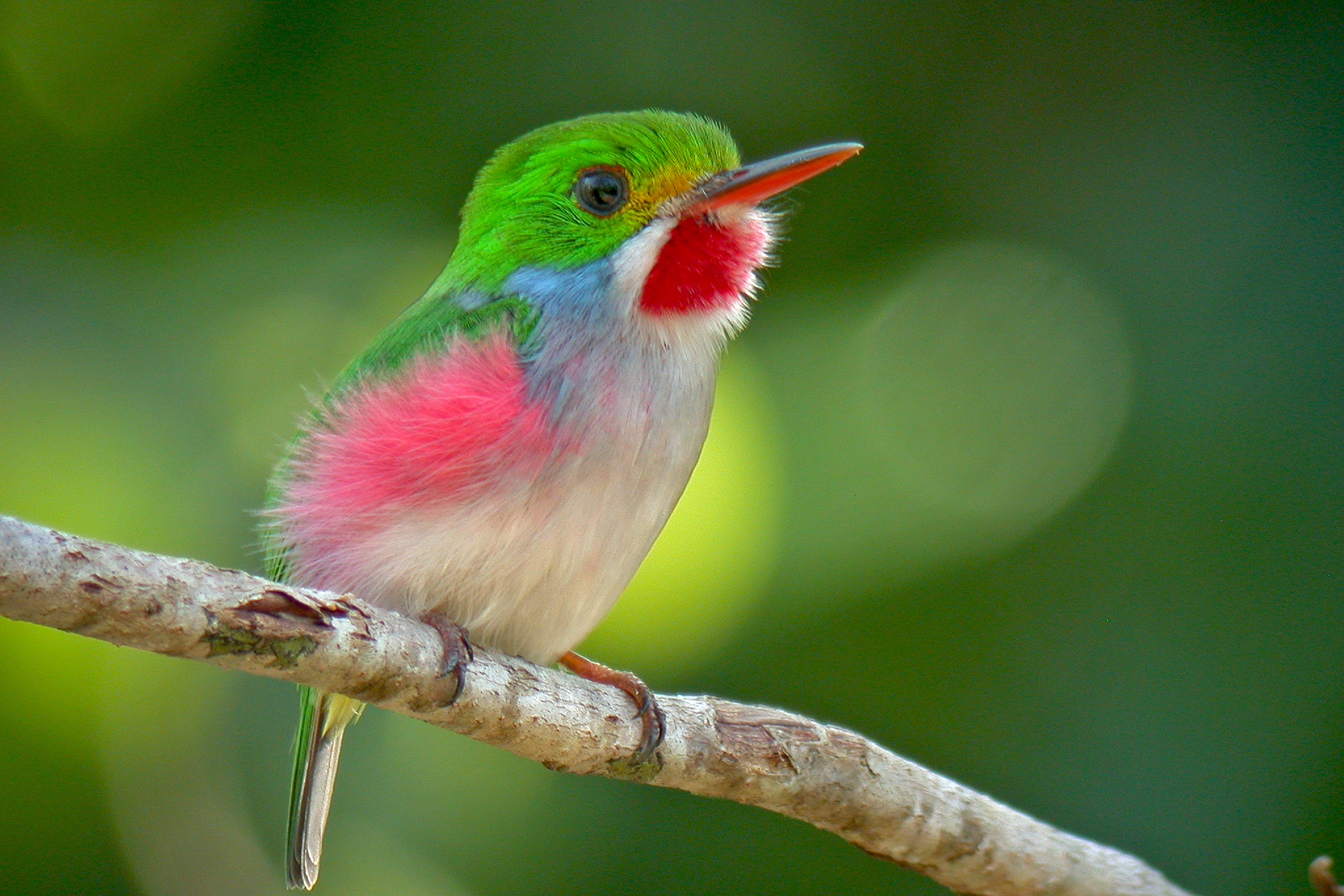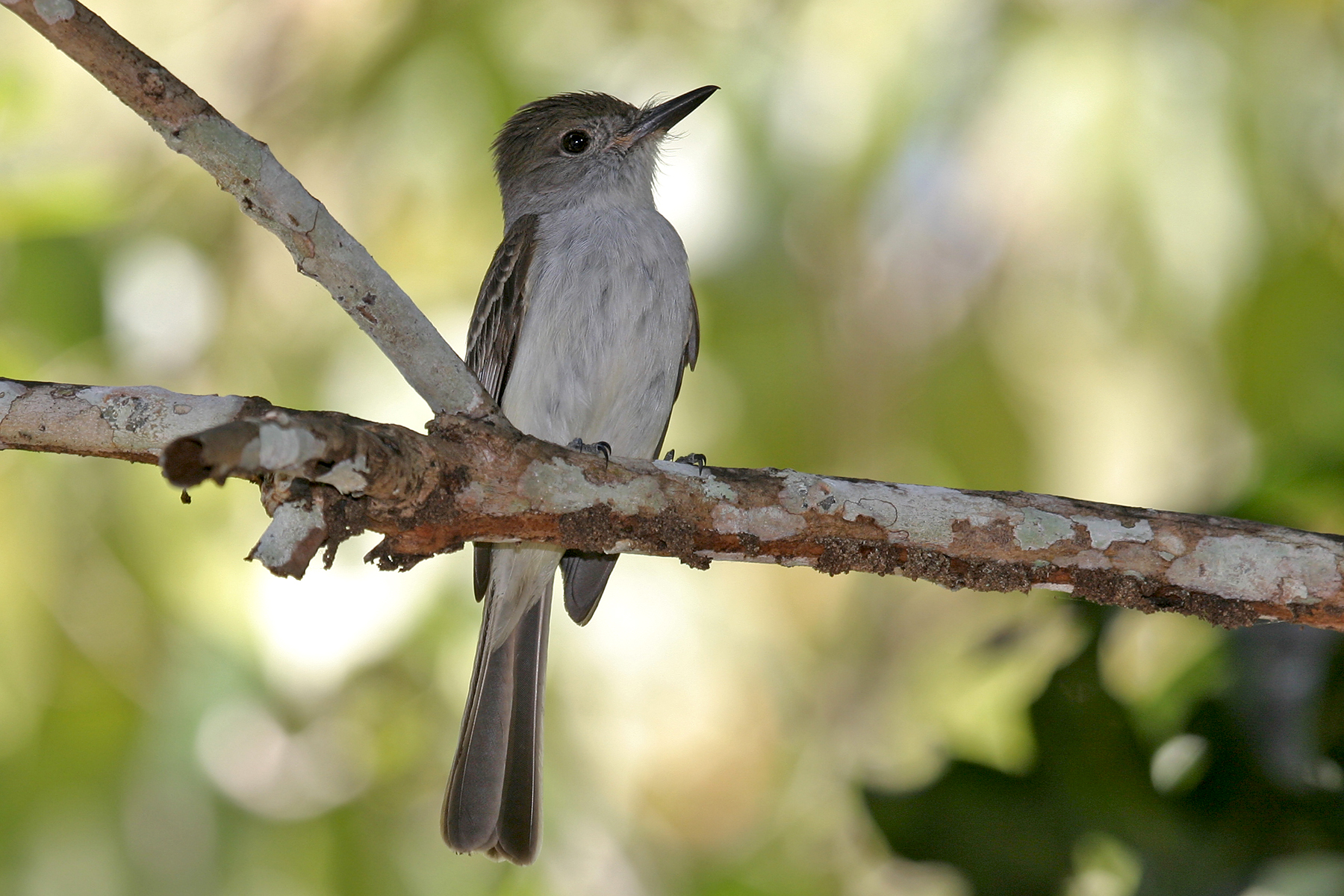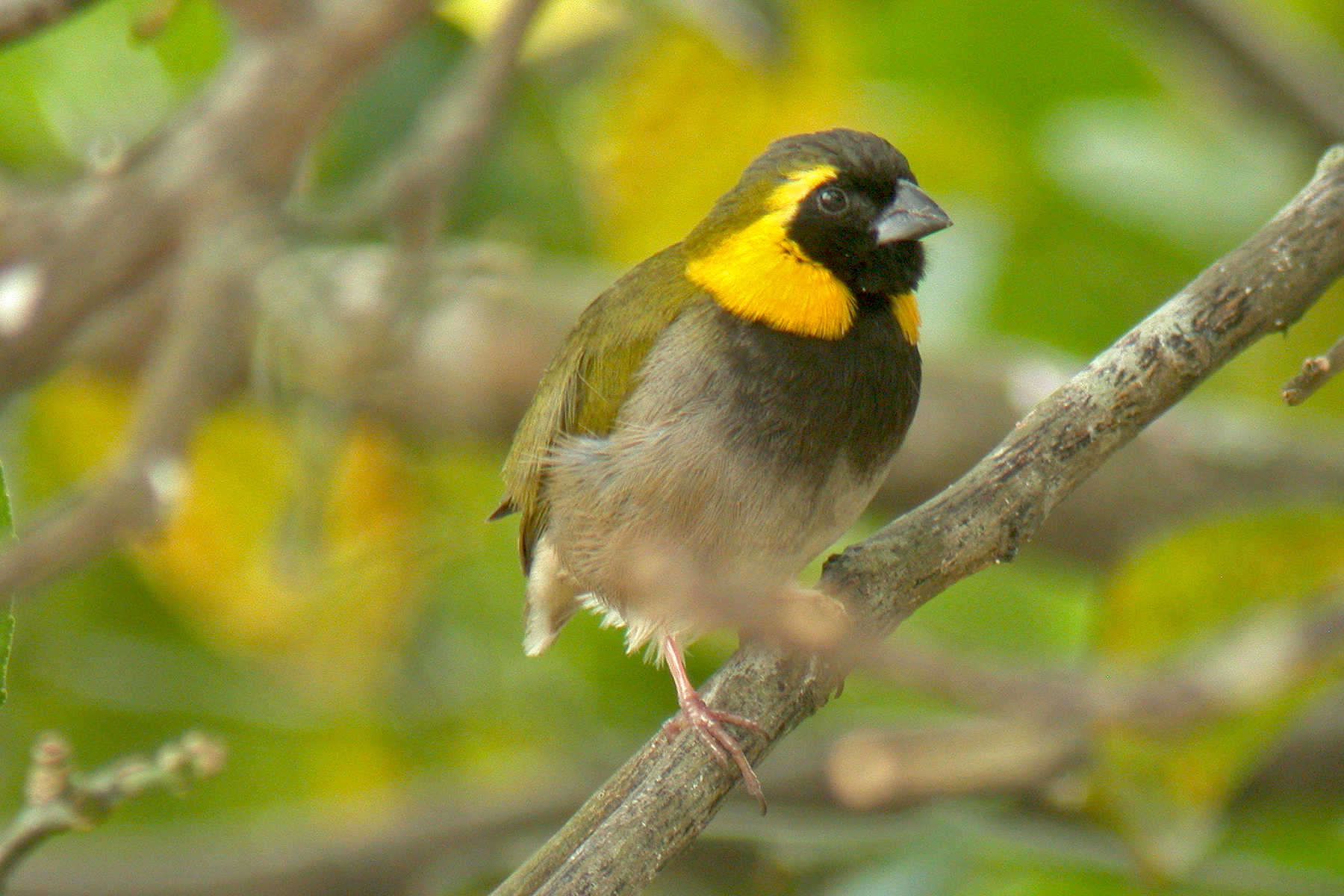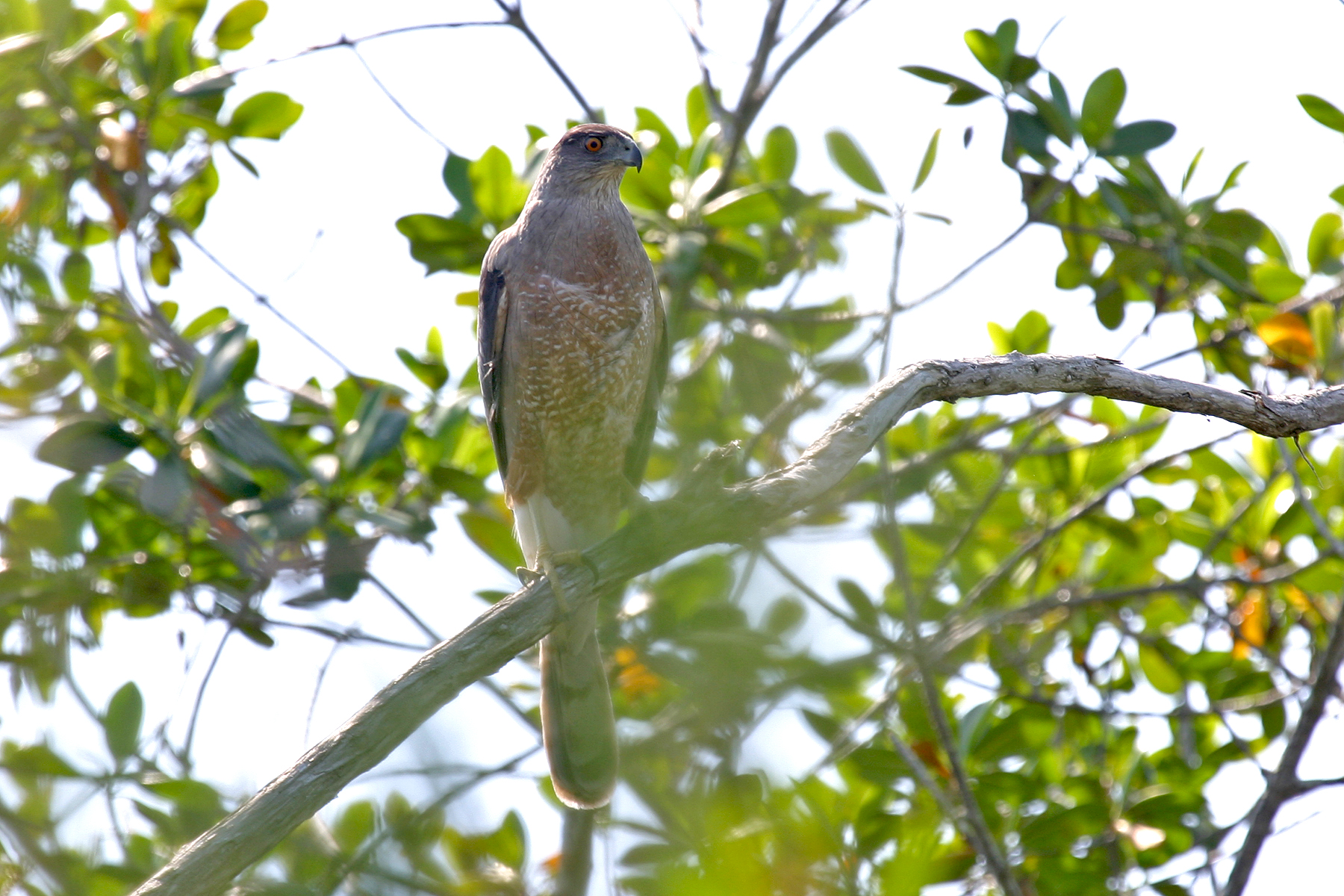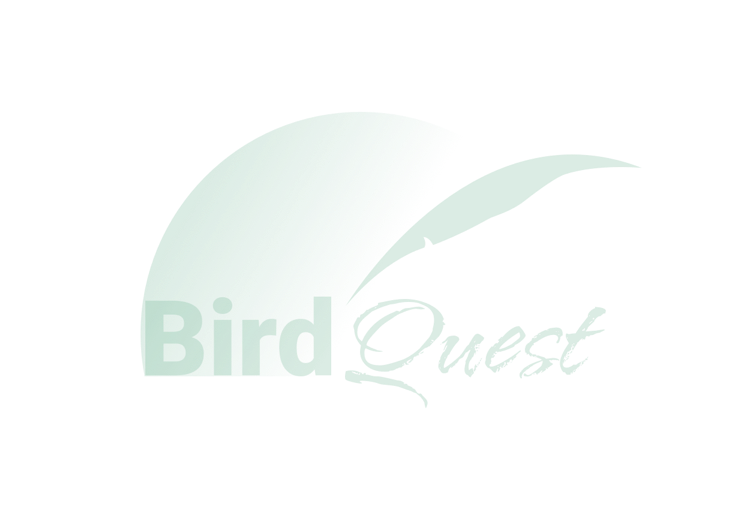CUBA BIRDING TOUR: DETAILED ITINERARY
Cuba: Day 1 Our tour begins this evening at Havana (or La Habana), where we will spend the night. The older parts of the charismatic city of Havana have a particular charm, with an air of faded elegance brought about by decades of neglect!
Airport transfers will be provided.
Cuba: Day 2 This morning we will head west to San Diego de los Banos for an overnight stay. We will arrive in time for some initial exploration.
While based at San Diego de los Banos we will explore La Güira National Park. The steep limestone hills and crags covered in lush forest provide an excellent introduction to Cuban birds. A particular speciality that we will be looking for here is the endemic Cuban Solitaire, an inconspicuous species with a rather nondescript plumage. It is, however, a renowned songster with an amazing jangling but musical song.
The forest here is mixed, with stands of pine occurring amongst the tropical broadleaf trees. The restricted-range Olive-capped Warbler (occurring only in Cuba and the Bahamas) also occurs here and is particularly associated with these pockets of conifers. To see these birds picking insects off pine needles is a scene reminiscent of more northerly climes and seems a little incongruous south of the Tropic of Cancer.
One of the most delightful inhabitants of the forest is the endemic Cuban Tody. A member of a small family confined entirely to the Greater Antilles, it is distantly related to both motmots and kingfishers and indeed bears a superficial resemblance to them: it fly-catches from exposed perches, periodically darting out after its prey, and its brightly-hued plumage glows even in the dim light of the forest interior.
A series of squawks and deep trills will lead us to the splendid endemic Cuban Trogon, resplendent in its immaculate plumage of violet-blue, white and red, set off by its strangely-shaped tail. Like most trogons, they tend to sit motionlessly, and once located they often allow prolonged views.
Small noisy groups of Red-legged Honeycreepers scuttle around in the canopy, the males by this time in their stunning breeding plumage of black, deep violet and sky blue complete with a pair of improbably scarlet legs. Cuban Emeralds, by far the commoner of the two resident hummingbirds (and restricted to Cuba and the Bahamas), whirr inquisitively above our heads in a blur of greens. West Indian Woodpeckers (restricted to Cuba, the Bahamas and Grand Cayman) and endemic Cuban Green Woodpeckers call noisily from the moss-covered trunks, Western Spindalises (or Western Stripe-headed Tanagers), Northern Mockingbirds, Red-legged Thrushes, Black-whiskered Vireos and endemic Cuban Orioles (part of the split Greater Antillean Oriole complex) greedily devour the fruits of forest shrubs whilst on the forest floor we may find an Ovenbird silently foraging and perhaps a Ruddy Quail-Dove.
One can never fail to be captivated by Black-and-white Warblers with their insect-hunting antics (which include creeping up the trunks of trees in a most un-warbler-like fashion) and smart American Redstarts that flash flame and black as they spread their tails in the tall trees. In the understorey, noisy groups of endemic Yellow-headed Warblers (one of two members of the Cuban-endemic bird family Teretristridae) move through and a loud and repetitive song should soon lead us to another endemic, the Cuban Vireo.
Overhead, Turkey Vultures (incredibly common in Cuba) soar effortlessly and are sometimes joined by Red-tailed and Broad-winged Hawks. We will be keeping an eye on the sky as we also have our first chance of finding the rare and elusive endemic Gundlach’s Hawk in this area.
Other species we can expect include La Sagra’s Flycatcher (found only in Cuba, the Bahamas and Grand Cayman), Crescent-eyed (or Cuban) Pewee (restricted to Cuba and the Bahamas), Cuban Bullfinch (restricted to Cuba and Grand Cayman) and the endemic Cuban Blackbird, as well as Scaly-naped Pigeon, Zenaida and Mourning Doves, Yellow-bellied Sapsucker, Gray and Loggerhead Kingbirds, and Gray Catbird.
We will also visit a farming area where flocks of tiny Yellow-faced Grassquits are often joined by their rare but attractive endemic relative, the Cuban Grassquit.
We should encounter a number of widespread open country species for the first time, including Western Cattle Egret, White-winged Dove, Common Ground-Dove, the strange Smooth-billed Ani, Antillean Palm-Swift, Palm Warbler, Common Yellowthroat, Indigo Bunting, Eastern Meadowlark, Greater Antillean Grackle, Tawny-shouldered Blackbird and Shiny Cowbird.
Cuba: Day 3 After further birding in the San Diego de Los Banos region we will return to the Havana region for an overnight stay.
On our way, we will make short stops at one or two reservoirs are likely to produce Pied-billed and Least Grebes, Little Blue and Green Herons, Blue-winged Teal, Ring-necked Duck, Lesser Scaup, Ruddy Duck and American Coot.
Cuba: Day 4 Today we shall drive to Camagüey, a bustling city in south-central Cuba, where we will stay for two nights.
Sugar plantations, where grinning children play at the roadside or chew short lengths of sweet cane, are a frequent sight along the way, and here we will encounter the species which typify so much of agricultural Cuba and which will become very familiar during our stay.
A short stop at the edge of the Zapata Swamp may turn up our first endemic Zapata Sparrows and Red-shouldered Blackbirds. At our lunchtime stop, we are likely to encounter our first Cape May Warblers in the garden.
Cuba: Day 5 We shall spend today exploring the edge of the Sierra de Najasa, an area of rocky outcrops, open forests and palm groves south of Camagüey. As the sun warms up, a raucous array of parrot-like squeals and squawks which, amazingly, emanate from the near-endemic Cuban Crows, will entertain us as we focus our attention on the palm groves and forest patches. These areas contain much of interest and here we have a good chance of finding several specialities that are rare and difficult to find elsewhere. Plain Pigeons perch conspicuously on dead trees and colour is added by spectacular Cuban Amazons or Rose-throated Parrots (a species found in Cuba, the Bahamas and the Cayman Islands) and dashing endemic Cuban Parakeets. We may see the parakeets nesting in ‘tower block’ fashion in a dead palm tree, squabbling with West Indian Woodpeckers for the nesting cavities.
The rare and localized endemic Giant Kingbird can often be found perched in their favourite trees and Cuban Palm Crows (another exceedingly rare endemic species) give themselves away with their Rook-like calls (they look nearly identical to Cuban Crows!). Large, sluggish Great Lizard Cuckoos (found only in Cuba and the Bahamas) call loudly from within dense undergrowth, looking almost reptilian in their movements as they crawl around in search of a suitable vantage point from which to pounce on their unsuspecting prey.
Other species we may well find in this area include Black-crowned Night-Heron, Northern Crested-Caracara, the strange Limpkin, Common and Purple Gallinules, Northern Jacana, Northern Flicker (the endemic race is a potential split) and the endemic Fernandina’s Flicker.
Cuba: Day 6 Today we shall drive to Cayo Coco, one of the islands off the northern coast of Cuba, where we shall stay for two nights. We should have time for some initial exploration of this exciting area.
En route, we will pass through the interesting and bird-rich Sierra de Cubitas. Roadside stops here often produce large numbers of by now familiar species, including good numbers of warblers. Among the latter, we should find our first endemic Oriente Warblers (the second member of the endemic Teretristridae family). We will also stop at a lake where Anhinga and Snail Kite are often present.
Cuba: Day 7 It is the variety of habitats that makes Cayo Coco and the adjacent islands and causeway so special, for these low-lying islands are not only covered in thick jungle but also feature mangrove-fringed ponds, large mudflats and idyllic long sandy beaches.
One of our main targets here is the endemic Zapata Sparrow. Cayo Coco is the only place where the isolated race varonai occurs and our chances of seeing this rare sparrow with its bright butter-yellow breast and chestnut crown are better here than in the Zapata Swamp.
We shall also make a concerted effort to find three other uncommon and localized species, namely the delicate endemic Cuban Gnatcatcher, the restricted-range Bahama Mockingbird and the restricted-range (and, post the 2017 hurricane, very rare) Thick-billed Vireo, all of which inhabit the arid coastal scrub, and we will have our first chance to seek out the shy but colourful Key West Quail-Dove. This is also a good area for the endemic Cuban Black-Hawk and the declining West Indian Whistling-Duck, while White-crowned Pigeons can be relatively common.
Overhead, Magnificent Frigatebirds watch menacingly for a chance to rob Laughing Gulls of their last meals, Brown Pelicans and Western Ospreys plummet into the turquoise waters, Reddish Egrets pirouette madly during their frenzied fishing and deep-pink American Flamingos carefully sift the shallows. We shall all enjoy this absorbing opportunity to compare and contrast the many and varied feeding techniques of wetland birds as well as marvel at their beauty and diversity.
Among the other species that we may well encounter here are Double-crested and Neotropic Cormorants, Great Blue Heron (often including several individuals of the uncommon white and intermediate morphs), Tricolored Heron, Yellow-crowned Night-Heron, Great and Snowy Egrets, White Ibis, Roseate Spoonbill, Red-breasted Merganser (looking strangely out of place in the azure waters of the Caribbean), Merlin, Clapper Rail, Ring-billed and Laughing Gulls (often joined by an immature American Herring Gull or two), Caspian, Royal and Sandwich Terns, Belted Kingfisher, Prairie Warbler and Mangrove Warbler (split from Yellow). We should also see a good variety of waders including Black-necked Stilt, Semipalmated and Black-bellied (or Grey) Plovers, Killdeer, Greater and Lesser Yellowlegs, Short-billed Dowitcher, Willet, Spotted, Least, Semipalmated and Western Sandpipers, Sanderling and Ruddy Turnstone.
Cuba: Day 8 After some final birding on Cayo Coco we shall settle down for the long drive to Playa Giron where we shall stay for four nights. We will arrive in time for some initial exploration.
Cuba: Days 9-11 Playa Giron is situated at the edge of the Bahia de los Cochinos, better known as the ‘Bay of Pigs’, on the Caribbean coast southeast of Havana. Its hinterland is the richest single area for birds in Cuba and almost certainly in the whole Caribbean. The wide range of habitats, mostly contained within the confines of the Cienaga de Zapata National Park, are all within easy reach. In the dry forest the bare, eroded limestone substrate reveals that this area was once, thousands of years ago, formed by coral reefs. As we explore this fantastic area, spindly branches covered in pale green lichen crack underfoot, colourful butterflies silently glide past and enormous land crabs scuttle away, huge scarlet claws held aloft.
During our various outings in this productive area, we may well encounter the rare Gundlach’s Hawk as it hunts through the trees, setting off alarm cries from other denizens of the forest. A cautious inspection of some dead palm trunks may well reveal a family of endemic Bare-legged Owls and, in the more open areas, we will have another chance of finding the ground-loving Fernandina’s Flicker.
In sunlit forest glades flowering trees can contain a host of warblers: visiting Magnolia, Cape May, Black-throated Blue, Black-throated Green, Yellow-throated and Prairie Warblers, plus Northern Parula and Louisiana Waterthrush, can all be found here, as can the endemic Yellow-headed Warbler.
The smallest bird in the world, the endemic Bee Hummingbird, is regularly encountered at village gardens (finding this tiny bird that is scarcely larger than a bumble-bee in more ‘natural’ habitat is a major challenge we can happily avoid!). Its amazingly compact size combined with a brilliant red head and elongated side plumes make it one of the true gems of the Zapata area.
A noise amongst the leaf litter on the forest floor may prove to be one of the four species of quail-dove which this area holds: Gray-fronted (now a Cuban endemic following the splitting off of White-fronted Quail-Dove on Hispaniola), Ruddy, Key West and Blue-headed (another endemic). All of them have attractive and colourful plumages, perhaps rather surprisingly considering their rather secretive habits, but they are nevertheless extremely well camouflaged. With perseverance and a certain amount of luck, we should be able to see all of them.
As dusk turns into darkness the diurnal species fall silent, except perhaps for a mewing Gray Catbird, and we shall listen for the endemic Cuban Nightjar and look for them with a spotlight as they hawk over tracks or call from a roadside tree. We shall also look for the endemic Cuban Pygmy-Owl and the impressive Stygian Owl (for Cuba is probably the best place for observing this spectacular species). Tours late in the prime Cuban spring birding season may also encounter Antillean Nighthawk, a seasonal visitor. The aerial antics of this species are impressive, and at times they ‘whoosh’ overhead in a steep dive, occasionally passing just a few metres away!
During our stay in the area, we shall penetrate right into the heart of the Zapata Swamp where endemic Red-shouldered Blackbirds cling precariously to reed stems uttering their strange wheezing songs. Here amongst the dense rushes we shall try and lure the rare and very secretive endemic Zapata Wren into a low bush from where we may be able to watch him sing.
Sharing this habitat are Northern Waterthrush and the rare Zapata form of the Zapata Sparrow. Spotted Rails are sometimes heard in these swamps and occasionally glimpsed, but the very rare and little-known endemic Zapata Rail remains something of an enigma and we have no realistic chance of seeing one! Wood Stork, Glossy Ibis and Peregrine are sometimes seen overhead. Cuban Martins will be fresh back from their as yet undiscovered wintering grounds, whilst other hirundines may include Barn, Cave, Tree and Northern Rough-winged Swallows.
Cuba: Day 12 After some final Cuban birding we will have time to wash, change and pack at our hotel and enjoy a last lunch before we drive to Havana airport, where our tour ends in the early evening.


